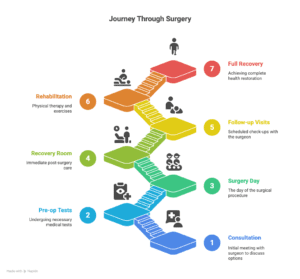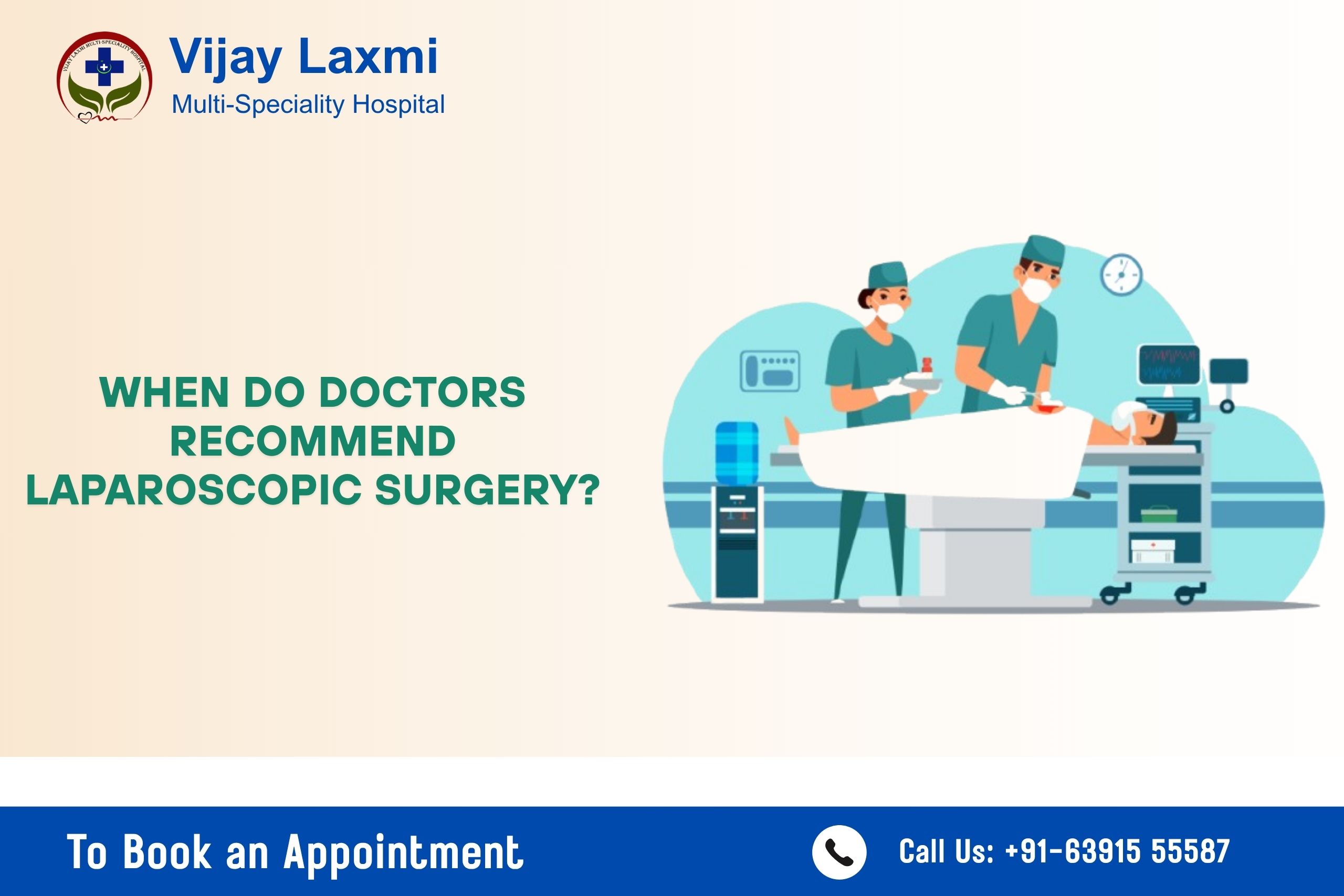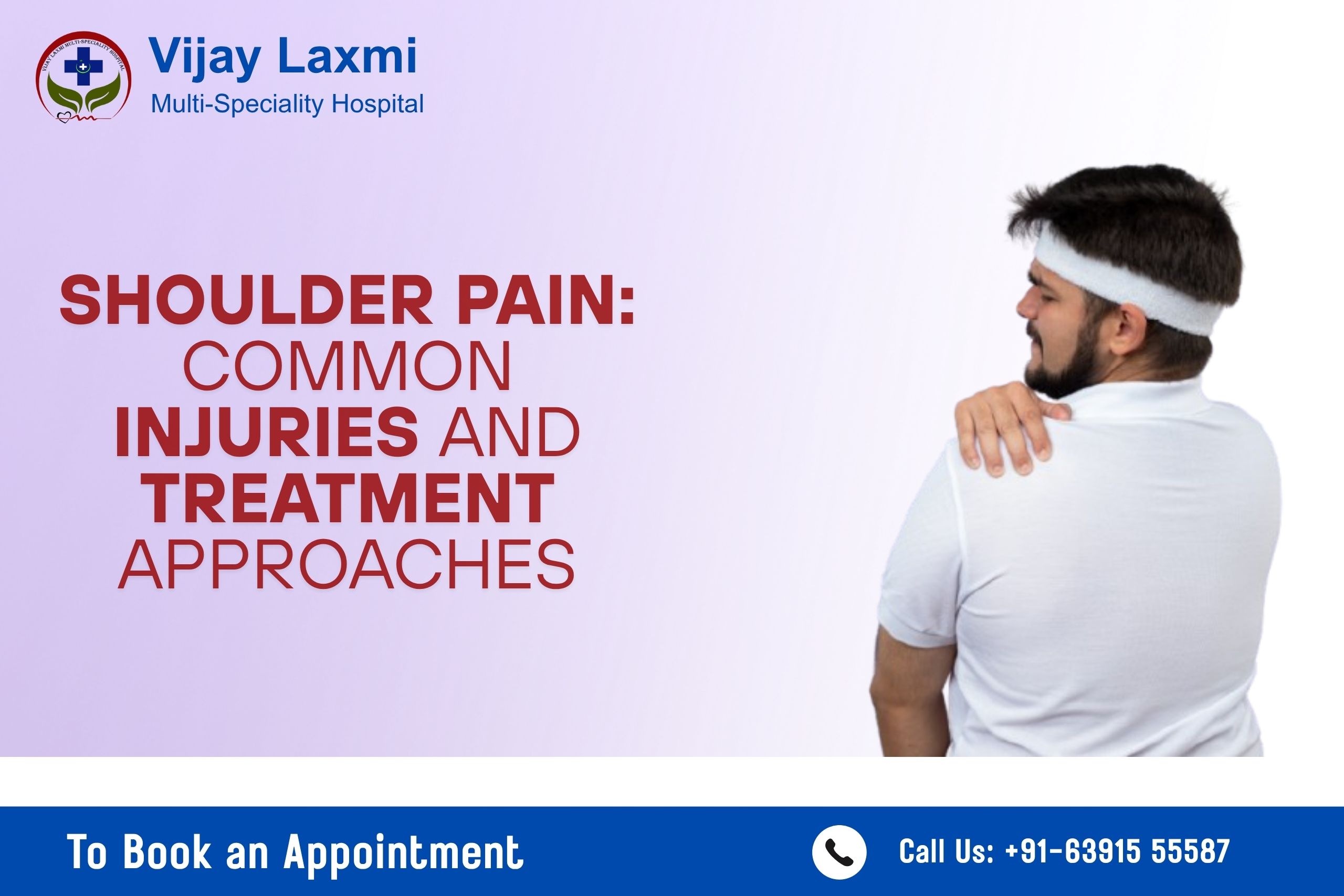
5 Reasons Why Laparoscopic Hysterectomy is Better Than Open Surgery
Hysterectomy is one of the most common gynecological procedures performed on women, often recommended when other treatments have failed to manage conditions like uterine fibroids, chronic pelvic pain, abnormal uterine bleeding, endometriosis, or gynecological cancers.
Traditionally, an open hysterectomy (abdominal hysterectomy) was the go-to surgical method. However, with advancements in medical technology, laparoscopic hysterectomy has emerged as a safer, less invasive, and more effective alternative.
In a laparoscopic hysterectomy, surgeons use a minimally invasive “keyhole” approach, which involves making 3–4 small incisions in the abdomen.
A thin tube with a high-definition camera (laparoscope) is inserted through these incisions, allowing the surgeon to remove the uterus with precision and minimal trauma to surrounding tissues.
This method contrasts sharply with open hysterectomy, which requires a large incision (6–8 inches), leading to longer recovery times and more discomfort.
At Vijay Laxmi Multi-Speciality Hospital, Jaunpur, Dr. Vishad Patel, an experienced laparoscopic and general surgeon, has successfully treated countless women using advanced laparoscopic techniques. His expertise ensures that patients experience less pain, faster recovery, and better overall outcomes.
This blog will explore 5 compelling reasons why laparoscopic hysterectomy is better than open surgery, along with a detailed guide on what to expect before and after the procedure.
What is Laparoscopic Hysterectomy?
A laparoscopic hysterectomy is a type of minimally invasive surgery performed to remove the uterus. Unlike open surgery, which involves a large cut, laparoscopic surgery uses small incisions (0.5–1 cm) through which specialized instruments and a laparoscope are inserted. The surgeon views the abdominal cavity on a high-resolution monitor and performs the procedure with exceptional precision.
When is Laparoscopic Hysterectomy Recommended?
Doctors often recommend laparoscopic hysterectomy for:
- Uterine fibroids (benign growths that cause pain and heavy bleeding)
- Severe endometriosis
- Chronic pelvic pain or adenomyosis
- Abnormal uterine bleeding unresponsive to medications
- Certain gynecological cancers (when minimally invasive surgery is feasible)
Benefits of Laparoscopic Hysterectomy

Image Source: Created using Napkin AI
- Shorter hospital stay: Most patients go home within 24–48 hours.
- Less pain and discomfort: Small incisions reduce post-operative pain significantly.
- Faster recovery: Most women return to routine activities within 2–3 weeks.
- Minimal scarring: Cosmetic outcomes are far superior compared to open surgery.
What is Open (Abdominal) Hysterectomy?
An open hysterectomy involves making a single, large incision in the lower abdomen to remove the uterus. This traditional approach is still used in complex cases where a laparoscopic method may not be possible (e.g., extremely large fibroids or advanced cancers).
Drawbacks of Open Hysterectomy:
- Larger incision leading to more post-operative pain
- Longer recovery (6–8 weeks compared to 2–3 weeks for laparoscopic)
- Higher chances of wound infection and complications
- Visible scarring on the abdomen
Though open hysterectomy can be necessary in certain situations, most women prefer laparoscopic hysterectomy because of its minimally invasive nature and better cosmetic and recovery outcomes.
5 Reasons Why Laparoscopic Hysterectomy is Better Than Open Surgery
The debate between laparoscopic hysterectomy and open (abdominal) hysterectomy is common among patients who are advised to undergo this procedure.
While both methods aim to remove the uterus, laparoscopic hysterectomy offers superior results in terms of recovery, cosmetic appeal, and patient comfort. Below are five detailed reasons why laparoscopic hysterectomy is considered better:
1. Smaller Incisions and Less Pain
A laparoscopic hysterectomy involves 3–4 tiny incisions, each less than 1 cm, compared to the 6–8 inch incision used in open hysterectomy.
These small cuts cause minimal trauma to the skin and underlying tissues, leading to less discomfort after surgery.
Patients who undergo laparoscopic surgery often report:
- Lower levels of post-operative pain
- Reduced need for pain medications
- Ability to walk and move within hours of surgery
For example, a patient undergoing open hysterectomy might require strong painkillers for several days, while a laparoscopic patient often manages pain with mild medications.
This reduced pain allows women to resume light activities like walking, desk work, or self-care within a few days — something that is almost impossible with open surgery.
2. Faster Recovery and Shorter Hospital Stay (≈200 words)
Recovery is one of the main factors influencing a patient’s decision. With laparoscopic hysterectomy, the average hospital stay is only 1–2 days, compared to 4–5 days for open surgery.
Why does recovery take less time?
- Smaller incisions mean fewer stitches and less trauma.
- Reduced pain allows patients to walk on the same day or the next morning.
- Less internal damage means faster wound healing.
Most women who undergo laparoscopic hysterectomy return to work or daily activities within 2–3 weeks, while open hysterectomy patients often need 6–8 weeks for complete recovery.
For working women or mothers with family responsibilities, this faster recovery is a life-changing advantage.
3. Lower Risk of Infection and Complications
Open hysterectomy involves a large incision, which increases the risk of post-operative infections, wound complications, and blood loss. In contrast, laparoscopic hysterectomy’s smaller incisions:
- Heal faster
- Are less prone to infection
- Reduce chances of hernia formation
Studies have shown that laparoscopic hysterectomy has 40–50% lower infection rates compared to open surgery.
Additionally, patients experience less internal scarring (adhesions), which can cause pain or digestive problems after open surgery.
For patients with pre-existing health conditions like diabetes or obesity, minimizing infection risk is critical, making laparoscopic hysterectomy the safer choice.
4. Minimal Scarring and Better Cosmetic Outcome
Scarring is a major concern for many women. Open hysterectomy leaves a visible scar across the lower abdomen, which may be 6–8 inches long and takes months to fade. This can affect body confidence, especially in younger women.
Laparoscopic hysterectomy, however, leaves 3–4 tiny scars, each just a few millimeters in size. These scars fade significantly within a few months and are often barely visible.
Women who choose laparoscopic hysterectomy benefit not just from improved recovery but also from better cosmetic results. For many, this is an important factor in overall satisfaction with the surgery.
- Reduced Blood Loss and Faster Healing (≈180 words)
Laparoscopic hysterectomy is performed with advanced instruments that seal blood vessels efficiently, leading to minimal blood loss during the procedure.
On average, blood loss during laparoscopic hysterectomy is less than half of what occurs during open surgery. This means:
- A lower chance of requiring a blood transfusion
- Reduced post-operative fatigue
- Quicker return to energy levels
Moreover, the tissues heal faster due to less trauma, leading to fewer post-surgical complications like delayed wound healing or internal adhesions.
Who Should Consider Laparoscopic Hysterectomy?
Laparoscopic hysterectomy is suitable for most women, but it is especially recommended for:
- Women with small-to-medium fibroids or endometriosis
- Patients who want faster recovery and minimal scars
- Women looking for less pain and shorter hospital stays
- Those with a busy lifestyle or work schedule
However, women with extremely large uterine fibroids, advanced cancers, or certain medical conditions may require open surgery. Dr. Vishad Patel at Vijay Laxmi Multi-Speciality Hospital carefully evaluates each patient’s condition and recommends the safest, most effective surgical method.
Pre- and Post-Surgery Care Guide

Image Source: Created using Napkin AI
Before Surgery:
- Medical tests: Blood tests, ultrasound, and other imaging may be done to prepare for surgery.
- Dietary adjustments: You may be advised to avoid solid foods 12 hours prior to the procedure.
- Medication review: Discuss any current medications with your doctor.
- Mental preparation: Understanding the process can help reduce anxiety.
After Surgery:
- Pain management: Mild painkillers are usually sufficient after laparoscopic surgery.
- Diet: Start with light foods and gradually return to your normal diet.
- Activity: Gentle walking is encouraged within 24 hours to aid recovery.
- Follow-ups: A check-up is usually scheduled within 7–10 days post-surgery.
- Avoid heavy lifting: For 3–4 weeks, avoid strenuous physical activity.
By following these care guidelines, patients can ensure a smooth and complication-free recovery.
FAQs
- Is laparoscopic hysterectomy painful?
No, the pain is minimal compared to open surgery due to smaller incisions. Most patients report mild discomfort. - How long does laparoscopic hysterectomy take?
The surgery typically takes 1–2 hours, depending on the complexity of the case. - Can I walk after laparoscopic hysterectomy?
Yes, patients are often encouraged to walk within 12–24 hours post-surgery to promote healing. - Will I experience hormonal changes after hysterectomy?
If only the uterus is removed and ovaries are preserved, hormonal balance remains unaffected. However, if ovaries are removed, hormone replacement may be considered. - What is the cost of laparoscopic hysterectomy in India?
The cost varies based on the hospital and complexity, but Vijay Laxmi Multi-Speciality Hospital offers affordable, transparent pricing. - Is laparoscopic hysterectomy safe for older women?
Yes, it is considered safe for women of all ages, provided they are fit for anesthesia.
Why Choose Vijay Laxmi Multi-Speciality Hospital for Laparoscopic Hysterectomy?
At Vijay Laxmi Multi-Speciality Hospital, Jaunpur, we provide cutting-edge laparoscopic hysterectomy procedures under the expert care of Dr. Vishad Patel, a highly skilled laparoscopic and general surgeon.
Our hospital is equipped with:
- Advanced laparoscopic technology
- Skilled anesthesiologists and nursing staff
- Personalized pre- and post-operative care
- Affordable treatment packages
Patients trust us for safe, minimally invasive procedures and quick recovery timelines.
Final Thoughts
Laparoscopic hysterectomy clearly offers advantages over open surgery, including smaller incisions, less pain, faster recovery, and minimal scarring. With an experienced surgeon like Dr. Vishad Patel, patients can undergo this procedure with confidence, knowing they are receiving world-class care.
Book your consultation today and take the first step toward healing and performance recovery.
Call Us: +91-63915 55587
Visit Us: Laxmi Complex, Jaycees Chauraha, Azamgarh Rd, Pratap Colony, Jaunpur, Uttar Pradesh 222002











